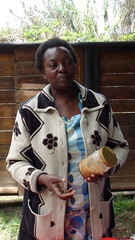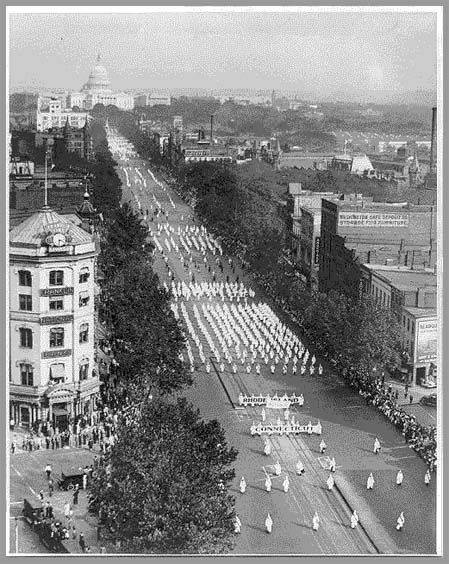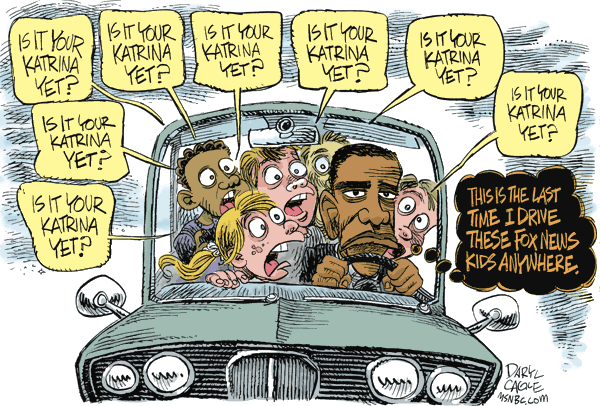Cross posted from Border Jumpers, Danielle Nierenberg and Bernard Pollack.
 Hundreds of thousands of people from across the world are headed to South Africa to watch the World Cup, descending on Johannesburg, Cape Town, Durban, and six other cities across the country for the biggest sporting event the continent has ever seen. Yet, not everyone headed there is a sports fan. Some are being dragged by spouses, some by friends, some want to be apart of the excitement, but don’t want to dish out the dough for tickets, and some are just building in some extra vacation time to see the sights.
Hundreds of thousands of people from across the world are headed to South Africa to watch the World Cup, descending on Johannesburg, Cape Town, Durban, and six other cities across the country for the biggest sporting event the continent has ever seen. Yet, not everyone headed there is a sports fan. Some are being dragged by spouses, some by friends, some want to be apart of the excitement, but don’t want to dish out the dough for tickets, and some are just building in some extra vacation time to see the sights.
My partner Danielle and I recently had the privilege of spending nearly two months traveling across South Africa, meeting with farmers and looking at projects that are working to alleviate hunger and poverty (as part of a 15 month research trip across the continent). Along the way we met with dozens of travelers and packed every weekend with cool excursions. From our travels, here is a guide of 50 non-sport related things to do while in South Africa.
Tons of incredible activities will be missing, so please use the comments section below to create a more comprehensive list.
Johannesburg
What to Do:
 1) Spend an entire day at the Apartheid Museum, it’s brilliantly laid out using technology and multi-media, and the visit takes you on a journey that will forever change the way you look at race relations and racism. It was a powerful and emotional experience
1) Spend an entire day at the Apartheid Museum, it’s brilliantly laid out using technology and multi-media, and the visit takes you on a journey that will forever change the way you look at race relations and racism. It was a powerful and emotional experience
2) Go on a bike tour of the city
3) Take a private walking tour or 4) group tour of Soweto where you will see Freedom Square, site of the Soweto up-risings, Desmond Tutu’s home, the Mandela Museum, and a visit to a local settlement.
5) Reserve a spot on the one and a half hour guided tour organized by SAB brewing (partners with Miller-Coors in the USA) complete with a 3D adventure and an IMAX-style movie, real life machinery depicting the beer making process, and lots more.
6) Aside from the Mall of America in Minnesota, the East Gate Mall is the biggest shopping center I’ve ever been to. It has two movie theaters and two more huge malls within walking distance. Alternatively, (7) the mall in Rosebank is closer to the city and has everything you might need.
8) If your traveling with kids you might want to take a one hour trip to Maropeng and visit the UNESCO World Heritage Site known as The Cradle of Humankind. The interactive journey offers a underground boat ride, fossils, and learning about how humankind was born.
9) Alternatively, you might want to take the family for a visit to the Gold Reef City Theme Park.
Where to Eat/Drink and Enjoy the Nightlife:
 10) For vegetarians, we loved the Kauai Health Food & Juice Co chain
10) For vegetarians, we loved the Kauai Health Food & Juice Co chain
11) For drinks, sip a martini at Ratz 12) eat sushi at Tokyo Star in Melville, or 13) stop by Sundeck in Norwood. The Rosebank mall also has some lively outdoor options.
14) For live jazz, head to Kippie’s and 15) to shake your booty head to Carfax.
Where to stay:
16) For backpackers, consider staying in Soweto at the Diamond Digger’s Lodge or 17) Bob’s Bunkhouse near the airport.
18) For budget travelers, the Sunbury Bed and Breakfast is a great option or 19) the slightly pricier Turrent Guesthouse, both in the fun and bohemian suburb of Melville in close walking distance to bars, cafes, restaurants, and shops.
How to get to and from:
19) Long-haul bus companies are a good bet, our best experiences and most reliable service was with Intercape bus company.
 20) Within South Africa, discount airlines Kulula and 1time are options to consider when South Africa Airways prices are too high.
20) Within South Africa, discount airlines Kulula and 1time are options to consider when South Africa Airways prices are too high.
Pretoria
What to Do:
20) You might consider a tour of the Jacaranda City (named after the tree by the same name), where you can visit historical sites, including the President’s Office, Melrose House, the Church Square, Kruger House, and the Voortrekker Monument as well as the Union Buildings.
21) You can escape for the afternoon to the National Zoological Gardens and head up the cable car to see a nice overview of the city.
22) For shopping, Pretoria has a decent-sized mall called Menlyn Park, and a smaller shopping center in Hatfield.
Where to Eat/Drink and enjoy the Nightlife:
23) Head to Hatfield for fun restaurants, bars, and nightlife — with ten neat places all next to eachother on Burnett street, you don’t have to go far.
24) Start your morning with a delicious cup of coffee and free wifi at News Cafe
25) For West and South African food, you can try Kariba restaurant or (26) the African Traditional Pub and Grill
Where to stay:
27) For budget travelers, stay at The Village which is in easy walking distance from all the action in Hatfield, yet clean, friendly, quiet, and includes a delicious breakfast.
Durban:
What to Do:
28) For those looking for a safari, you might head to the Hluhluwe Imfolozi Game Reserve in KwaZulu-Natal. In addition to incredible birds and other species — you might also spot all the “Big Five” – lions, buffaloes, rhinos, elephant and leopards.
29) Go for a drive through the green hills of the KwaZulu-Natal Midlands.
30) Visit a traditional village in Zululand. You can take lessons in traditional dance and music or visit beautiful Phobane Lake
31) For families, you might take the kids to Ushaka Marine World, Africa’s largest marine and water park. The place has five “zones” that includes: Sea World (aquarium), a Phantom Ship (restaurant), Wet ‘n’ Wild (waterpark), and Ushaka Beach.
32) Pay a visit to the Indian Market, where you can grab a bite to eat, buy spices, meet traditional healers, and try on cool fabrics.
33) Durban has a terrific Botanical Gardens, which showcases free live music on Sundays, and allows you to picnic on the property.
Where to Eat/Drink and Enjoy the Nightlife:
 34) Vegans and Vegetarians will love EarthMother restaurant which has a terrific menu of locally grown, organic foods. Also, it has the best fresh juice and smoothie bar in all of South Africa
34) Vegans and Vegetarians will love EarthMother restaurant which has a terrific menu of locally grown, organic foods. Also, it has the best fresh juice and smoothie bar in all of South Africa
(35) For seafood lovers, you won’t go wrong with a trip to New Cafe Fish or (36) Famous Fish Co
Where to Stay:
37) For backpackers avoid the over-priced, poor value, Lonely Planet pick called Gibela Backpackers and instead head down the same street to Tekweni Backpackers Hostel in Morningside.
Cape Town
What to Do:
 38) Book ahead for a visit to Robben Island, where Mandela and other prisoners were incarcerated. Afterwards 39) take walking tour to the District Six museum, where you will see the remnants of homes that were destroyed.
38) Book ahead for a visit to Robben Island, where Mandela and other prisoners were incarcerated. Afterwards 39) take walking tour to the District Six museum, where you will see the remnants of homes that were destroyed.
40) Check out the Cape of Good Hope Nature Reserve where you can see a breathtaking view at Cape Point, go swimming, and visit a nearby penguin colony
41) You can go scuba diving and snorkel with the Great White Sharks of South Africa. This cave dive is a very popular tourist attraction, where you can literally look the ocean’s toughest predator in the eyes.
42) About 90mins by car away is a great spot to head on a safari day trip called Aquila Game Reserve where you will be able to spot giraffes, lions, leopards, and zebras.
43) Tour the Stellenbosch and Paarl Valley wineries. South African wine is famous around the world and you can find several affordable tour companies that will take you between vineyards by bike, 44) bus, or 45) by foot.
46) Hike, 47) mountain bike, or take a cable car to the top of Table Mountain, which offers incredible views of Cape Town City, Table Bay and Robben Island.
48) For shopping you can head to the Victoria and Alfred Waterfront. It’s pricey, but there are tons of restaurants, shops, bars, and even a movie theater.
Where to Eat/Drink and Enjoy the Nightlife:
49) One tour company provides the opportunity to “break bread” with two local Cape Town families, including a home-cooked meal and stunning views over Cape Town, and shared conversation. Then you head to a second host family for coffee and more cultural sharing.
50) Start with homemade Italian food at 95 Keerom, then 51) head for a drink at the Nose Wine Bar, 52) before going out dancing at Snap. It’s easy to have a great time in Cape Town with incredible, vibrant nightlife.
Where to Stay:
53) For backpackers you might try the fun (but very noisy) Long Street backpackers in the heart of restaurant and bar nightlife.
54) For budget travelers you will enjoy St John’s Waterfront Lodge, located right in the heart of the city, it’s quit, clean, well-managed, and very friendly.
Thank you for reading! If you enjoy our diary every day we invite you to get involved:
1. Comment on our daily posts — we check for comments everyday and want to have a regular ongoing discussion with you.
2. Receive regular updates–Join the weekly BorderJumpers newsletter by clicking here.
3. Help keep our research going–If you know of any great projects or contacts in West Africa please connect us connect us by emailing, commenting or sending us a message on facebook.
 The Abooman Women’s Group in southern Ghana, “started off as a mixed group,” of women and men, says Fatima Addy, the Group’s leader. But today the group consists mainly of women working together to help one another. And says Fatima, “the women’s group performs better than the men’s group” by getting higher incomes from their products, especially in the off season.
The Abooman Women’s Group in southern Ghana, “started off as a mixed group,” of women and men, says Fatima Addy, the Group’s leader. But today the group consists mainly of women working together to help one another. And says Fatima, “the women’s group performs better than the men’s group” by getting higher incomes from their products, especially in the off season.
 Hundreds of thousands of people from across the world are headed to South Africa to watch the World Cup, descending on Johannesburg, Cape Town, Durban, and six other cities across the country for the biggest sporting event the continent has ever seen. Yet, not everyone headed there is a sports fan. Some are being dragged by spouses, some by friends, some want to be apart of the excitement, but don’t want to dish out the dough for tickets, and some are just building in some extra vacation time to see the sights.
Hundreds of thousands of people from across the world are headed to South Africa to watch the World Cup, descending on Johannesburg, Cape Town, Durban, and six other cities across the country for the biggest sporting event the continent has ever seen. Yet, not everyone headed there is a sports fan. Some are being dragged by spouses, some by friends, some want to be apart of the excitement, but don’t want to dish out the dough for tickets, and some are just building in some extra vacation time to see the sights. 1) Spend an entire day at the
1) Spend an entire day at the  10) For vegetarians, we loved the Kauai Health Food & Juice Co chain
10) For vegetarians, we loved the Kauai Health Food & Juice Co chain  20) Within South Africa, discount airlines
20) Within South Africa, discount airlines  34) Vegans and Vegetarians will love
34) Vegans and Vegetarians will love  38) Book ahead for a visit to
38) Book ahead for a visit to 
 Zambian grocery stores are filled with processed foods from around the world, from crackers made in Argentina and soy milk from China to popular U.S. breakfast cereals. In addition to these foreign foods, however, are also variety of locally made and processed products, including indigenous varieties of organic rice, all-natural peanut butter and honey from the
Zambian grocery stores are filled with processed foods from around the world, from crackers made in Argentina and soy milk from China to popular U.S. breakfast cereals. In addition to these foreign foods, however, are also variety of locally made and processed products, including indigenous varieties of organic rice, all-natural peanut butter and honey from the 
